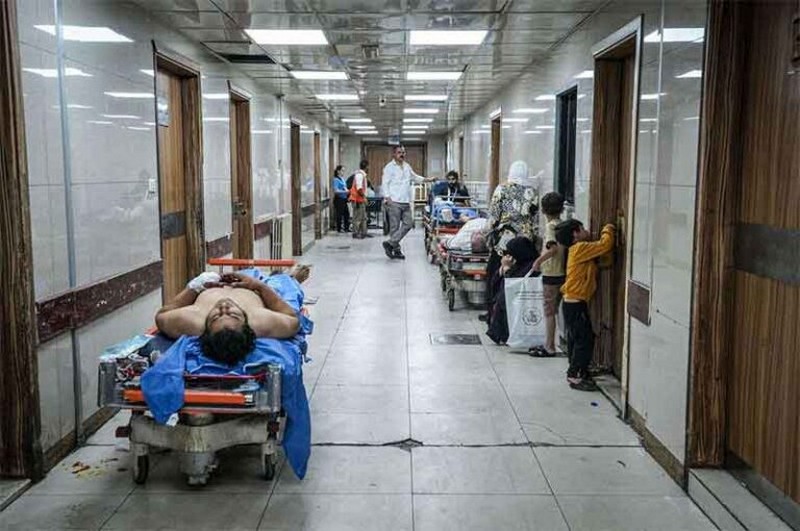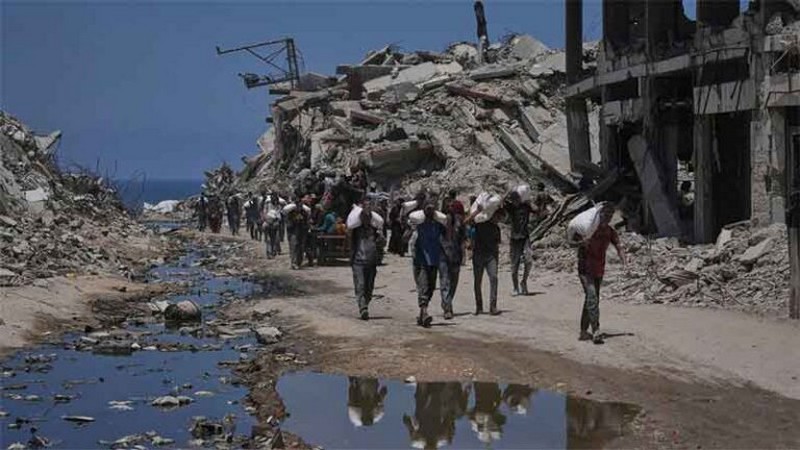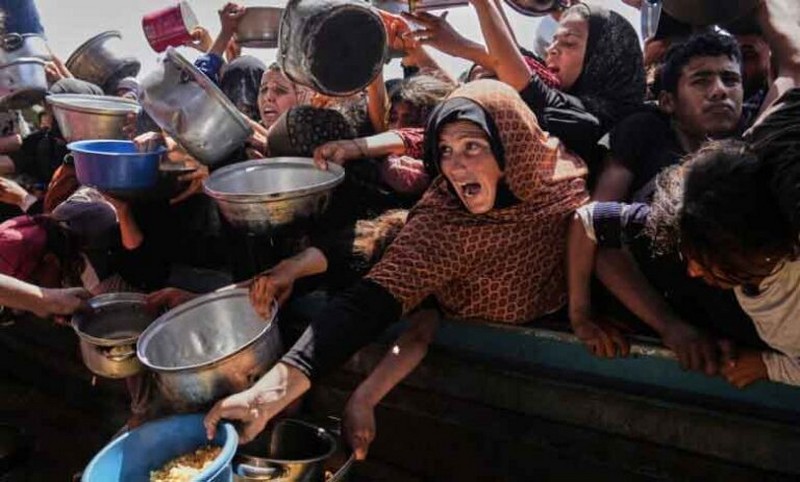By Juan Cole
The United States has focused on the Middle East since World War II, seeking its oil, gas, and other mineral resources and coveting control of its strategic waterways. The old colonial powers and the superpowers of the Cold War era most often backed dictatorial regimes there, because they were easier to control than democracies, and this country also supported the Israeli settler colony as a bulwark of Western interests. President George W. Bush was the first president to depart (at least rhetorically) from America’s romance with regional authoritarians, pledging to “democratize” the Middle East, though he left office with little to show for it. Now, you have to wonder whether, in some strange sense, the shoe is on the other foot and the pathological U.S. support for dictatorships there is now spreading across the Atlantic Ocean, just as the trade winds blow Saharan sand and dust toward the American Southwest.
Democratic Backsliding
Here’s something that should sound familiar in the United States today: Qais Saied of Tunisia, elected president in 2019, campaigned against homosexuality and — yes! — African immigrants. In 2021, he lawlessly dismissed his prime minister and parliament and went on to rewrite the country’s constitution so that he could appoint yes-men to its Supreme Court. Then he began jailing his political opponents. In four short years, Saied undid all the political progress Tunisia had made in the previous decade, creating a dictatorship arguably worse than that of Zine El Abidine Ben Ali, who was overthrown in January 2011 in the first of several major Arab Spring youth revolts.
Worse yet — and this should sound familiar, too — Tunisia seemed to sleepwalk into authoritarianism. Trade unionists hoped the president would reject the neoliberalism of the International Monetary Fund, while civil society organizations hoped he would curb the Interior Ministry’s past repressiveness. No such luck. Europe declined to punish the newly developing dictatorship by cutting off aid, instead rewarding Saied with an economic deal in return for his willingness to crack down on African emigration. Of course, such democratic backsliding has been a feature of the Middle East for decades, since local civil society remains weak, pro-regime billionaires have proliferated, and Western governments have seldom reacted negatively to (and all too often rewarded) any move toward dictatorship.
Now, you might say that the shoe is on the other foot. What Saied did to Tunisia might as well have been a blueprint for Donald Trump. Although he hasn’t yet actually tried to rewrite the constitution, the MAGA leader has been the beneficiary of a decades-long $250 million dark-money plot, led by obscure Federalist Society apparatchik Leonard Leo, to reshape the Supreme Court. The result: a set of justices who are distinctly inclined to let Trump do his damnedest — even expel undocumented residents of the United States to gulags in third-world countries with no court process. Meanwhile, labor union members have too often placed faith in Trump’s pledges to bring back industry by using tariffs to reduce competition. And the centrists of the Democratic Party are the proverbial deer-in-the-headlights, too paralyzed to react effectively as he transforms this country into an ever more autocratic state. They also seem all too inclined to let our democracy slip away, while placing their hopes in a 2026 congressional blue wave that, even if it happens, may be too late to stop Trump from creating his version of a one-party state.
Raw Milk and Vitamin A
Consider it typical of our times that Field Marshall Abdelfattah al-Sisi’s 2013 coup against the only freely elected Egyptian government since the country’s monarchy was toppled in 1952 had no significant adverse consequences in Washington. In 2014, a leading officer in the Egyptian army, which receives $1.3 billion a year in American aid, made quixotic health claims. Major General Ibrahim Abdel-Atti announced that he had personally “defeated AIDS with the grace of my God at the rate of 100%. And I defeated hepatitis C.” In the process, he confused the foundational nucleic acids DNA and RNA, provoking one Egyptian comedian to suggest that the country’s medical schools should never again accept anyone from Abdel-Atti’s village. However, the North Korean-like pall that has blanketed freedom of speech in Egypt was precisely what permitted such bizarre official behavior, since there was little way for the public to respond to even his most absurd claims.
Yet, imagine this: Abdel-Atti appears almost sane and sober in comparison with the antics of U.S. Secretary of Health and Human Services Robert F. Kennedy, Jr., who has discouraged vaccinations even as a measles outbreak has begun to run wild (and prove fatal in a few cases) 25 years after the U.S. officially eliminated the disease. Kennedy’s proposed treatment for measles? Raw milk and vitamin A. Sadly, overdoses of the latter have caused liver disease in some children.
Kennedy is also working hard to gut the Department of Health and Human Services and the Centers for Disease Control and Prevention. The damage he’s doing in the Trump era to America’s vital and effective vaccination infrastructure could unleash serial plagues upon the public. And it’s not likely to get better any time soon, given the irrational demagogue now in the White House, just as Egyptians suffer under megalomaniacal generals.
A Kafala System
And here’s another Middle Eastern peculiarity inherited from Western colonialism that will sound all too familiar in Donald Trump’s America: the large numbers of non-citizens and stateless people who suffer from a lack of basic civil and human rights. In the nineteenth and early twentieth centuries, imperial Great Britain made treaties with small sheikhdoms along the coast of the Persian Gulf to ensure the security of its shipping and check rivals like the Ottoman Empire. When the British finally withdrew completely from the Gulf in 1972, they left behind postage-stamp countries with vast oil and gas wealth, which did not have a sufficient native-born population to work the rigs or staff the energy companies. The British Empire had often brought into its colonies, like Kuwait and Bahrain, subjects from British India.
After decolonization, such workers from India, Pakistan, and Bangladesh were coded as foreigners in the Arab Gulf. They began laboring under a “guarantor” (kafala) system in which a local entrepreneur would take responsibility for migrant laborers who often surrendered their passports to him for as long as they were in the country. The guarantor would then take a cut of their wages or business profits. No matter how long such migrants lived in those countries, they and their children almost never became eligible for citizenship, and they could have their visas revoked at any time. Others now have trouble even getting in. Typically, the United Arab Emirates (UAE) in January announced a ban on visas (for Afghans, Libyans, Yemenis, Somalians, Lebanese, Bangladeshi, Cameroonians, Sudanis, and Ugandans). And that should sound familiar, since the Trump regime has already implemented a visa ban on 19 mainly African and Middle Eastern countries. In short, the policies toward immigrant labor in the two regions seem to be converging.
Countries like the United Arab Emirates have a little more than a million citizens and 10 million mostly South Asian guest workers, some of whom have lived there all their lives or are even second or third generation residents. Such migrant workers, however, have no right to form unions or strike. Any encounter with law enforcement, even a fender-bender, can result in their expulsion. New York University Professor Andrew Ross was typically banned from the country simply for researching labor conditions. British academic Matthew Hedges was imprisoned on false espionage charges in 2018, tortured, and threatened with deportation to a UAE black site in Yemen before ultimately being released. New York University has a branch in Abu Dhabi, where the students and faculty have had run-ins with the government of President Mohammed Bin Zayed, which surged in the past two years because the country does not permit social media posts criticizing Israel’s atrocities in Gaza.
And it’s not only migrant laborers in the Middle East who can be denied citizenship despite long residence. Indigenous people, too, sometimes become non-citizens (just as Native Americans were denied U.S. citizenship until 1924). The Arab nationalists of Syria denaturalized some 100,000 Kurdish Syrians in Hasakah Province in 1962 and, over time, that figure grew to several hundred thousand. The Middle East is a patchwork of citizenship hierarchies, where the line can be drawn capriciously by nationalists, fundamentalists, or monarchs.
It does not take much familiarity with Donald Trump’s policies in the past six months to see the ways in which his administration seemingly yearns for similar levels of citizenship and limited residency to be imposed in this country. He has even threatened to deport naturalized American citizens like (can you believe it?) Elon Musk or Zohran Mamdani, the Democratic candidate for mayor of New York City, for their criticisms of him. If his fondest wishes were fulfilled, he might even prefer his country to be more like Israel when it came to anyone he didn’t like living there.
Expelled for Gandhism
An analogy could also be made between the “foreign” migrant workers in the Gulf, who have no local citizenship or rights, and the Palestinians under Israeli rule in the West Bank or Gaza. Like the Syrian Kurds of Hasakah, they have been made stateless in their own country. They lack a national government and the rights and passport it would give them. Palestinians in Area C, the 60% of the West Bank that is directly ruled by the Israeli military, see rights like unionizing or striking routinely curbed. Like Gulf workers, Palestinians are subject to expulsion at the whim of the Israeli military. And keep in mind that, when Israel seized the West Bank and Gaza in 1967, some 300,000 Palestinians were expelled from it or, if working abroad, forbidden to return home.
Some of those trapped by the decades-long occupation have also been subject to arbitrary removal. The Israeli authorities illegally expelled Palestinian pacifist Mubarak Awad from his homeland in 1988 for advocating Gandhi-style nonviolent noncooperation. Tens of thousands of West Bank Palestinians have been forced from their homes in the past two years, as entire refugee camps have been razed, the Israeli military has destroyed homes, and Israeli squatters on Palestinian land have enacted pogroms.& Since the Hamas assault on Israel in October 2023, at least 100,000 Gazans have been forced out of Palestine entirely by Israeli commanders, who have ordered that some 90% of the housing stock there be damaged or destroyed.
Inside the Jewish ethnostate of Israel, the 21% of the population who are of Palestinian heritage are distinctly second-class citizens. Human Rights Organizations like Adalah have identified 65 Israeli laws that discriminate against Palestinian-Israelis. In 2018, the Israeli parliament declared that national sovereignty is invested solely in the country’s Jews. Since October 2023, Palestinian-Israelis have been under strict surveillance and have to be careful about their Internet postings. The Israeli Supreme Court ruled in 2022 that they can be stripped of their citizenship and expelled for breach of loyalty to the Israeli state.
SEVIS Hits
Like the rulers of some Gulf states, Trump and his crew want to treat all noncitizens on visas in the U.S. — and even some naturalized citizens — arbitrarily. Since he returned to power in January, thousands of visas have been revoked for even minor contact with law enforcement, just as happens to hapless migrants in the UAE. Trump officials ran the data in the Student and Exchange Visitor Information System (SEVIS) against police reports and zeroed in on 6,400 of them, terminating their SEVIS entries without notice. That was, of course, in contravention of government regulations. Most of the hits involved cases where charges had been dropped or were minor. Affected students filed more than 60 lawsuits and consistently prevailed in court, forcing ICE to restore the SEVIS records, at least for now.
In addition, Trump and Secretary of State Marco Rubio attempted to revoke the visas of students who had been active in protests against the Israeli genocide in Gaza (in precisely the same way and on the same grounds as the Emirati government does). Among such high-profile cases, the State Department targeted figures like Columbia University graduate and pro-Palestinian protester Mahmoud Khalil, who had permanent resident status in the country but was arrested anyway and sent to a Louisiana prison. Tufts graduate student Rümeysa Öztürk, who had written a mild opinion piece for her student newspaper criticizing her school’s response to events in Gaza, was similarly seized. Apparently, the plan was to avoid letting them appear before a judge and instead summarily deport them, but the courts insisted they be given hearings, upholding the apparently imperiled principle of habeas corpus. Chapters of the American Association of University Professors, along with the Middle East Studies Association, have sued on First Amendment grounds to overturn Rubio’s policy of declaring speech to be a national security emergency, permitting the deportation of visa and green card holders.
In 1945, the case of Bridges v. Wixon established that not just citizens but all people residing in the United States enjoy the protection of the Bill of Rights. As the Cold War heated up in the 1950s, however, the court did allow a few deportations of non-citizens due to their membership in the Communist Party (as in Harisiades v. Shaughnessy in 1952). Eighty years later, in a distinctly new world, Rubio and his colleagues wish to reverse Bridges and make the U.S. a giant version of the United Arab Emirates, functionally an absolute (Trumpian) monarchy. Instead of emulating the best of Middle Eastern values such as generosity to guests and love of learning, Trump and crew seem to admire only Western-imposed authoritarianism.
Ironically, in the second Trump era, America’s billionaires and corporate elites have decided that this country should be ruled with some of the same techniques that they and their Middle Eastern proxies have long used abroad. Instead of America democratizing the Middle East, it’s increasingly clear that Trump and crew have decided to Middle-Easternize the United States.
Juan Cole, a TomDispatch regular, is the Richard P. Mitchell collegiate professor of history at the University of Michigan.
24 July 2025
Source: countercurrents.org










